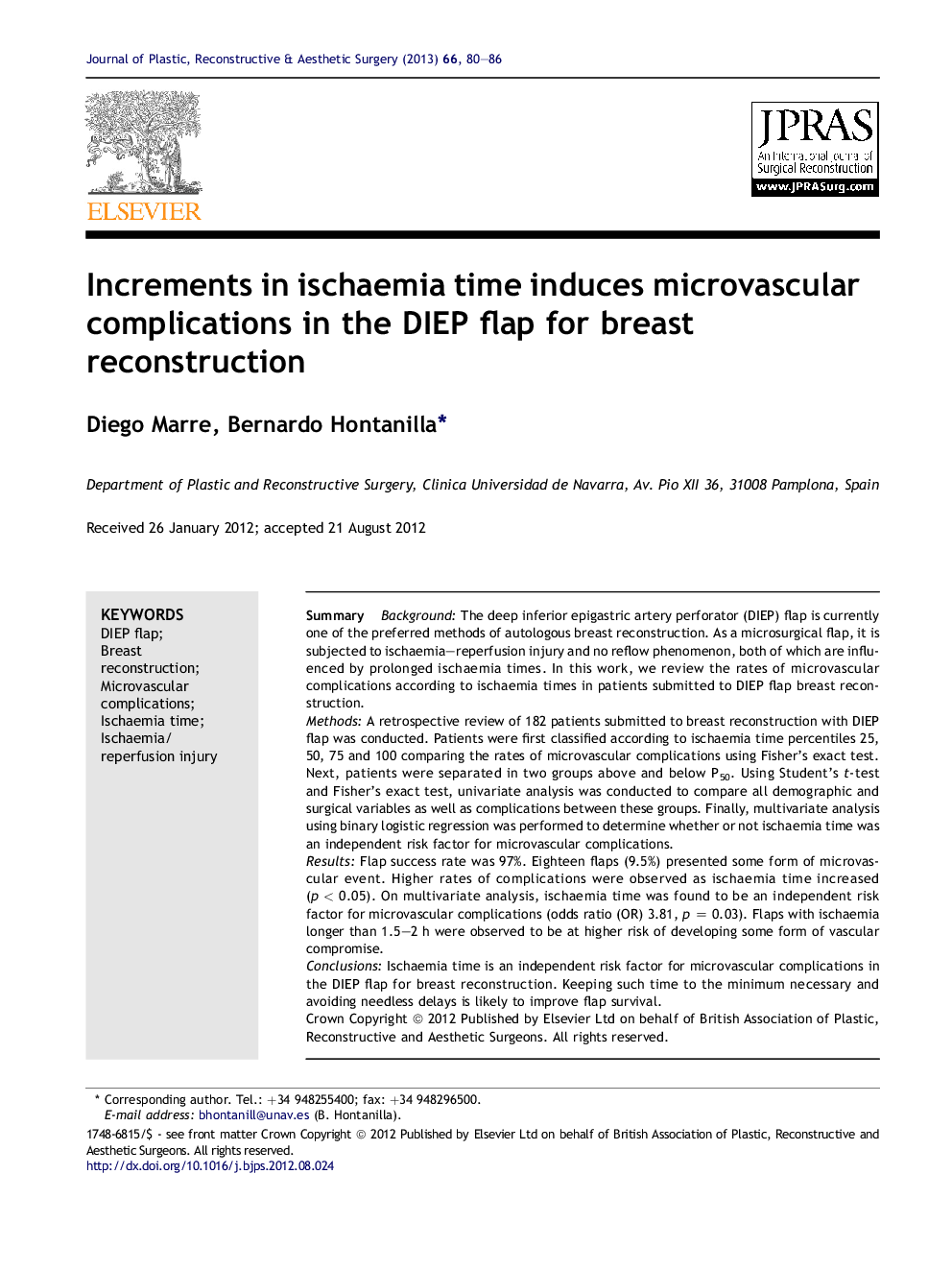| Article ID | Journal | Published Year | Pages | File Type |
|---|---|---|---|---|
| 4118846 | Journal of Plastic, Reconstructive & Aesthetic Surgery | 2013 | 7 Pages |
SummaryBackgroundThe deep inferior epigastric artery perforator (DIEP) flap is currently one of the preferred methods of autologous breast reconstruction. As a microsurgical flap, it is subjected to ischaemia–reperfusion injury and no reflow phenomenon, both of which are influenced by prolonged ischaemia times. In this work, we review the rates of microvascular complications according to ischaemia times in patients submitted to DIEP flap breast reconstruction.MethodsA retrospective review of 182 patients submitted to breast reconstruction with DIEP flap was conducted. Patients were first classified according to ischaemia time percentiles 25, 50, 75 and 100 comparing the rates of microvascular complications using Fisher's exact test. Next, patients were separated in two groups above and below P50. Using Student's t-test and Fisher's exact test, univariate analysis was conducted to compare all demographic and surgical variables as well as complications between these groups. Finally, multivariate analysis using binary logistic regression was performed to determine whether or not ischaemia time was an independent risk factor for microvascular complications.ResultsFlap success rate was 97%. Eighteen flaps (9.5%) presented some form of microvascular event. Higher rates of complications were observed as ischaemia time increased (p < 0.05). On multivariate analysis, ischaemia time was found to be an independent risk factor for microvascular complications (odds ratio (OR) 3.81, p = 0.03). Flaps with ischaemia longer than 1.5–2 h were observed to be at higher risk of developing some form of vascular compromise.ConclusionsIschaemia time is an independent risk factor for microvascular complications in the DIEP flap for breast reconstruction. Keeping such time to the minimum necessary and avoiding needless delays is likely to improve flap survival.
